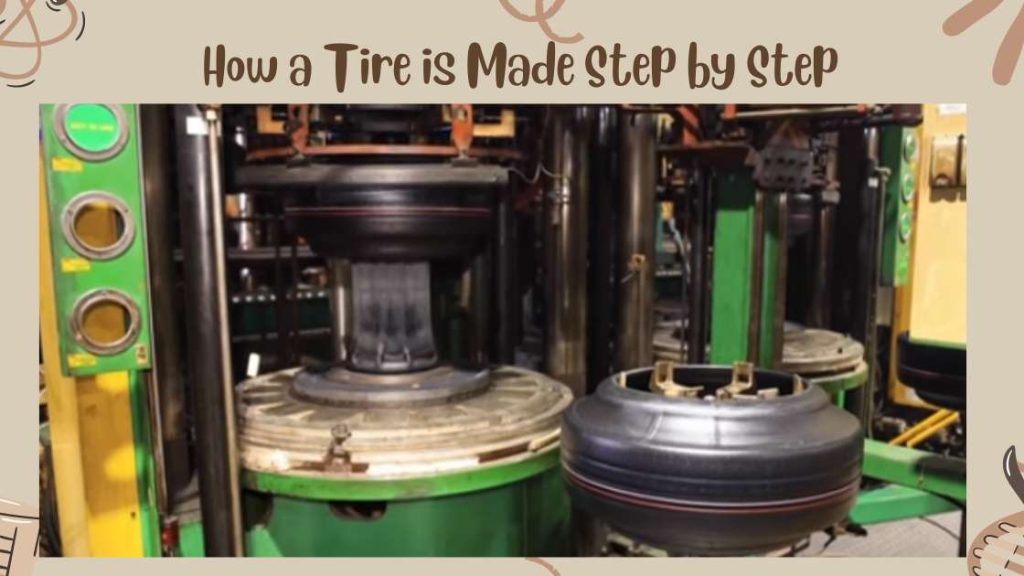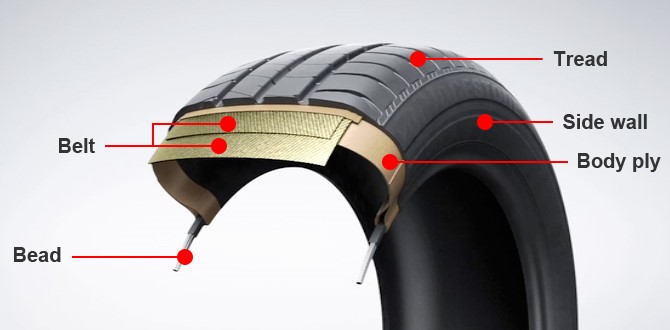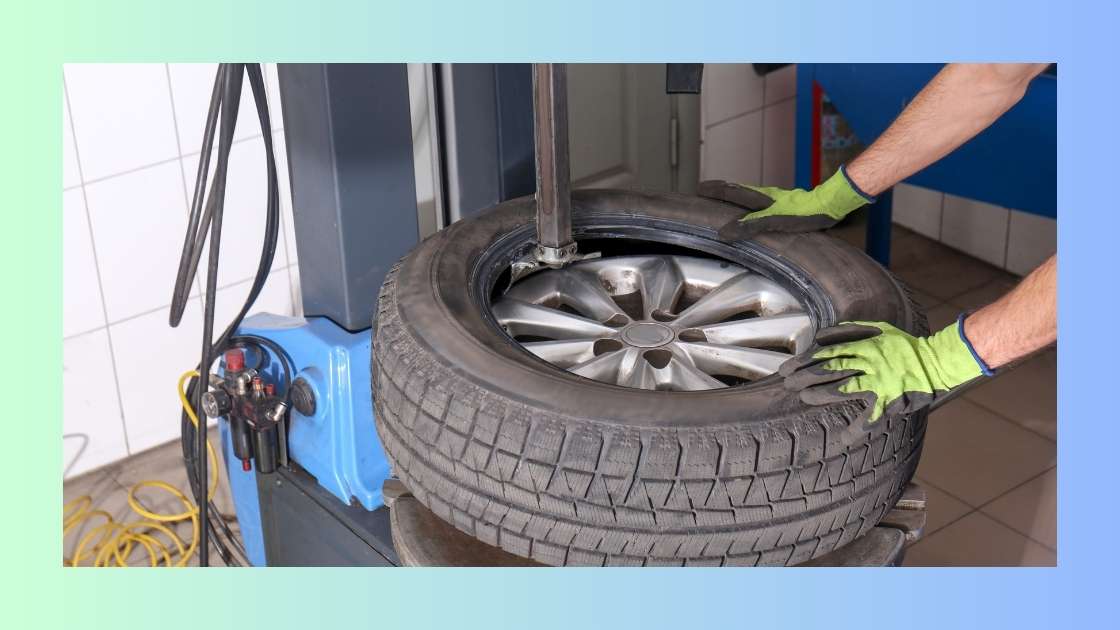Tire manufacturing involves several key steps: material preparation, tire building, and curing. The process starts with mixing raw materials, progresses to forming the tire’s shape, and finishes with vulcanization.
Producing a tire combines sophisticated technology with precision engineering, making it a model of industrial craftsmanship. A tire’s journey begins in a blender, where rubber, carbon black, and other chemical compounds merge into a homogenous mix. This mix forms the tire’s base components like treads and sidewalls.
Skilled workers and advanced machinery play critical roles in shaping and assembling these components, ensuring that every tire meets rigorous safety and performance standards.
Vulcanization, a process of applying heat and pressure, gives the tire its final form and characteristics such as durability and elasticity. But have you ever wondered about the intricate steps involved in creating a tire from scratch?

Let’s delve into the process: How a Tire is Made Step by Step? This straightforward explanation demystifies the complexity of tire manufacturing, providing clarity for consumers and enthusiasts alike.
By understanding this process, drivers can better appreciate the technology and craftsmanship behind each tire’s design and production.
Table Of Contents
How Are Tires Manufactured?
Imagine driving without a worry, gripping the road with ease. This feeling starts in a factory where tires get their shape. Tire manufacturing is a detailed process. It transforms simple materials into complex parts of your vehicle. This process ensures safety and performance on the road.
The tire-making journey starts with rubber and other materials. They blend to create a solid foundation. This mixture is carefully crafted. It forms the building blocks of the tires we trust.
Tire Making Process – The Essential Components:

Let’s explore what’s inside a modern tire:
- Tread: This part touches the road. It gives grip and durability.
- Sidewalls: These give the tire its shape. They also absorb shock from bumps.
- Beads: These connect the tire to the rim. They keep the tire snug and secure.
- Belts: These layers sit under the tread. They add strength to the tire.
- Inner Liner: This is the tire’s innermost layer. It holds air inside tubeless tires.
These components come together in a carefully staged process to make a tire.
Raw Materials: The Building Blocks
When crafting a tire, understanding the raw materials is vital. These materials provide the foundation for every tire’s performance and durability. They are the essential building blocks that define the tire’s quality.
What Are Tires Made Of?
Rubber serves as the primary ingredient in tire production. It comes in two main forms: natural and synthetic.
- Natural rubber originates from rubber trees.
- It offers excellent elasticity and tensile strength.
- Latex, the tree sap, is the starting point.
Synthetic rubber, on the other hand, is man-made.
- It is created from petrochemical feedstocks.
- It provides better aging and temperature resistance.
- It has a pivotal role in tire endurance.
Reinforcing Agents: Strength And Durability
To enhance performance, tires need reinforcing agents.
- Carbon black is a key component.
- It significantly boosts strength.
- It optimizes resistance against wear and tear.
Silica is another reinforcing agent, often used with synthetic rubber.
- It helps improve grip.
- It contributes to fuel efficiency.
- Its usage results in a longer-lasting tire.
The Inner Workings Of How To Make A Tire
Ever wondered how a tire comes to life? It all starts with a blueprint. This blueprint is not just a sketch but a detailed plan for ultimate safety and performance. Each design step ensures we drive smoothly on the road.
Design And Engineering:
Tires are not one-size-fits-all. Engineers craft each tire with a purpose. They use science and math to make tires safe and strong. They think about where and how they will drive. Wet roads, dry roads, or off-road – they plan for everything.
- Grip – How well the tire holds the road.
- Wear – How long the tire lasts.
- Comfort – How smooth the ride feels.
- Fuel Efficiency – How the tire helps save gas.
Prototyping: Ensuring Quality And Safety
Once the tire design is set, it’s time for a prototype. Prototyping tests the design in the real world.
Each tire must pass strict tests. Tests check if tires can handle heat, heavy loads, and long trips.
Only the best designs go to the next step.
| Test Type | Purpose | Result |
|---|---|---|
| Stress Test | Checks tire strength | Must not break under pressure |
| Durability Test | Measures tire life | Must last many miles |
| Performance Test | Ensures safe handling | Must grip well on roads |
| Efficiency Test | Checks fuel use | Must help save gas |
Mixing And Milling: Blending The Ingredients
Tires are a blend of art and science, starting with a precise mix of raw materials. The process ensures your tires can grip the road and last long. Let’s venture into the crucial step where the basic ingredients become a tire: Mixing and Milling.
Creating The Compound: A Recipe For Resilience
Tires are more than rubber. They are a mix of many materials. Each tire company has secret recipes. These recipes make tires strong and flexible. The recipe includes:
- Natural rubber: It makes tires stretch.
- Synthetic rubber: It helps tires last longer.
- Carbon black and silica: They make tires tough.
- Chemicals for protection and performance.
Experts combine these in giant machines. This forms the tire’s base material.
Milling: Achieving The Right Consistency
The mix is not ready after just mixing. It goes through rollers. The rollers press the mix. This makes the mix even. It’s like rolling dough. But, it must be exact. The right texture is key. This texture gives tires grip and flexibility.
Each part of the mix is checked. Machines test for quality.
This step is like cooking. Mixing and milling are to tires what baking is to bread. It sets the foundation.
Building The Base: The Tire Foundation
Tires carry us to every destination. The key to their strength lies beneath the rubber. Each tire starts with a strong foundation. The base gives the tire its shape and strength. It’s all about precision and care as the tire comes to life, layer by layer.
A tire must stay firmly on the wheel. That’s where the bead comes in. The bead is the tire’s inner edge. Bead wires, and steel rings, give the bead its strength. They make sure the tire fits snugly against the wheel, with no air escaping.
Imagine hugging a ball tightly—that’s what bead wires do to the wheel. They grip it firmly, guaranteeing a smooth connection. Made from high-strength steel, these wires withstand the force of the tire in motion. The right fit means safety and stability on the road.
Forming The Carcass: The Backbone Of The Tire

The carcass or body of the tire is similar to a spine. It supports the weight and absorbs the road. Fabric and steel cords make up this vital part. They crisscross inside the rubber. This forms a matrix of strength.
This layer ensures the tire stays durable and flexible. Precision machines layer these cords. They ensure uniformity and quality. The carcass is the tire’s hero. It battles the road’s challenges each day. It gives the tire its basic shape and structural integrity.
Together, the bead and carcass create a sturdy base. They are critical for a smooth ride. A well-built base means a trustworthy tire for your journeys ahead. The base is the unseen force behind every trip, every curve, and every mile.
Shaping And Molding: Giving Life To Tires

After gathering raw materials and creating them into layers, shaping and molding is where tires begin to look real. It’s like a tire’s moment of birth. This phase is critical in ensuring the final product can grip the road and carry loads safely.
The Green Tire: An Assembled But Uncooked Creation
A ‘green tire’ is not green in color. It’s the raw, unassembled form of a tire. Think of it as a dough before baking. Here’s how it’s made:
- The inner liner is placed to hold the air inside.
- Steel belts are added for strength.
- Tread and sidewalls complete the design.
- All parts are pressed together in a tire-building machine.
After assembly, the tire still needs to change into a strong and flexible final product. Heat and pressure play major roles in the next step.
Vulcanization: A Chemical Transformation

Vulcanization is where magic happens. It’s a chemical process that turns the tire into a durable product. Here’s a quick overview:
- The green tire is placed in a heated mold.
- Pressure is applied, shaping the tire.
- Sulfur is added to make the rubber hard.
- The tire is cooked at 300°F for 12-15 minutes.
This process links rubber molecules together. It’s like baking a cake until it’s just right. The result is a tire that’s ready to hit the road, flexible yet strong.
Molds And Treads: Imprinting The Signature Patterns
The creation of signature treads happens simultaneously with vulcanization. Tires are not just about durability but also about precision and grip. With the tire in the press, intricate molds work their magic.
Different tires have different tread patterns for various purposes:
| Tire Type | Tread Pattern |
|---|---|
| Racing Tires | Slick for maximum contact |
| Rain Tires | Deep grooves for water displacement |
| All-terrain Tires | Chunky for grip on uneven surfaces |
Each mold also imprints crucial information like size, type, and other specifications onto the tire. Once the tire exits the press, it sports the fresh tread pattern that defines its capabilities.
The tire has now been transformed with a unique identity, ready to take on various driving conditions with grace. It’s not merely crafted; it’s engineered with precision to keep you safe on every journey.
Conclusion
Understanding how to make a tire, brings appreciation for its design and function. Each step ensures safety, performance, and durability. As we’ve explored the tire manufacturing process, from raw materials to the final product, everything is measured and prepared in its own unique way.
Remember, well-made tires are pivotal for a smooth, safe journey. Choose wisely and drive safely.





